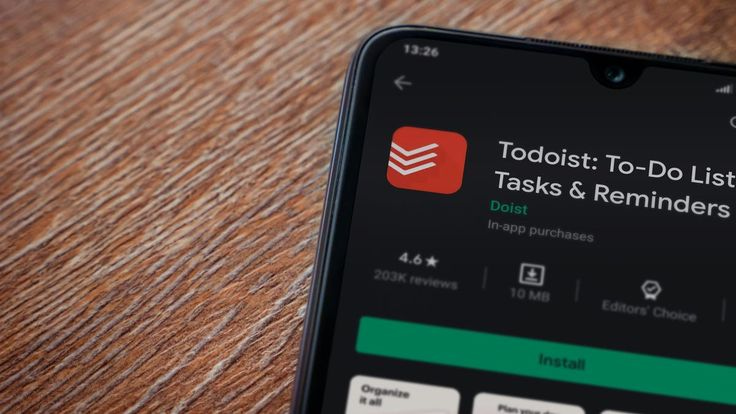You’re juggling tasks across sticky notes, emails, and random apps. Your goal? Find a tool that helps you organize your personal and work projects without overwhelm. Two names stand out: Trello vs Todoist. One offers boards that mimic sticky notes on a wall; the other looks like a classic to-do list. Which fits your workflow in 2025? In this in-depth comparison, you’ll learn how Trello and Todoist differ, what their features offer for personal and professional use, how they integrate with time tracking via Everhour’s time tracker, and which tool might be your perfect productivity partner.
What Are Trello and Todoist?
🔵 Trello: Trello is a visual project management tool based on the Kanban method. It uses boards, lists, and cards to organize tasks. Each board represents a project or workflow; within boards, lists represent stages of work (e.g., To Do, In Progress, Done), and cards represent tasks. Trello is known for its simplicity and flexibility.
![the 30 best trello templates in 2023 [paid & free]](https://blog-cdn.everhour.com/blog/wp-content/uploads/2023/04/Screenshot-2023-04-19-at-12-20-37-Project-Management-Trello.jpg)
🔴 Todoist: Todoist is a task manager that organizes tasks into lists and projects. It’s designed for quick task entry, prioritization, and scheduling. Tasks can have labels, filters, due dates, and reminders. The interface is minimalist, focused on speed and productivity.
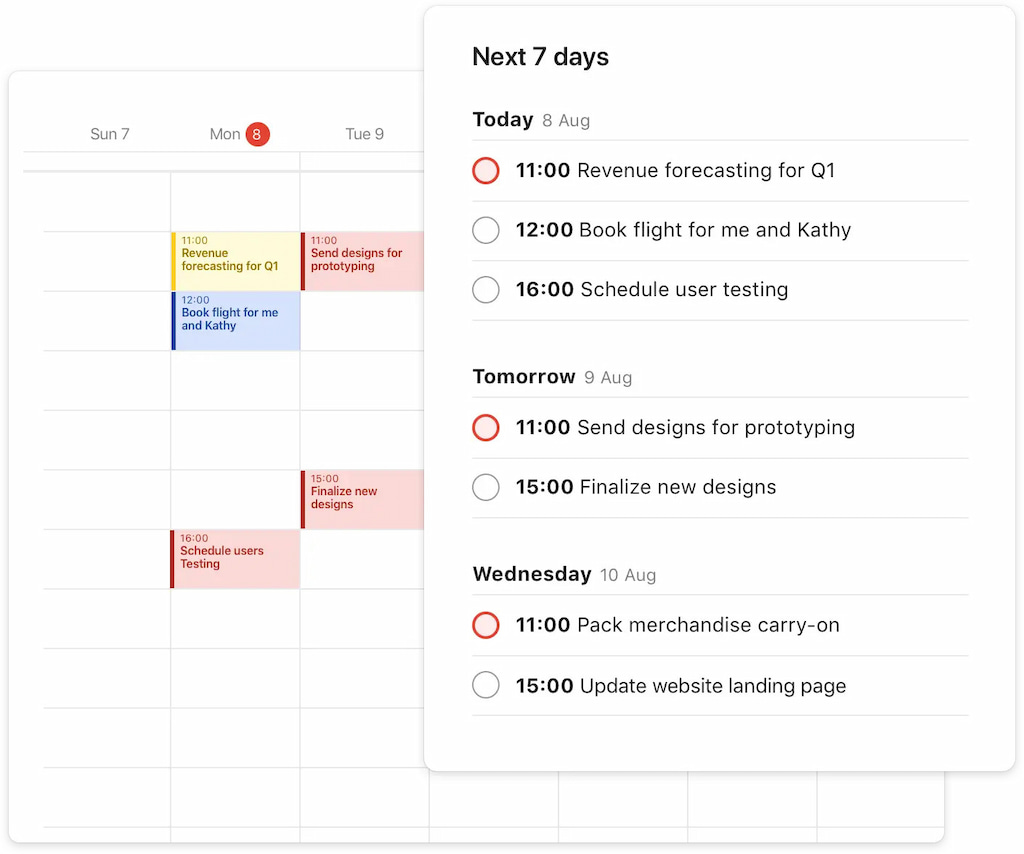
Why Compare Trello vs Todoist?
Both tools help you manage tasks, but they serve different working styles:
- 🎨 Visual vs linear: Trello’s boards are visual; Todoist’s lists are text-based.
- 📂 Project vs task focus: Trello works best for projects and workflows; Todoist shines for personal task lists and daily productivity.
- 👥 Collaboration: Trello encourages teamwork with shared boards; Todoist is strongest for individuals and small teams.
- ⚙️ Customizability: Trello offers Trello Power-Ups and automation; Todoist relies on labels and filters with fewer visual options.
💡 Understanding these differences helps you choose the right tool for your needs.
Trello vs Todoist: Feature Comparison
Interfaces & organization
- 📌 Drag cards across Lists → Boards → Cards. Move stuff like a boss.
- 🏷️ Labels, checklists, due dates, attachments. Everything in one card.
- 🖼️ Boards can have themes. Pretty & functional.
- 🤖 Butler automates boring stuff for you.
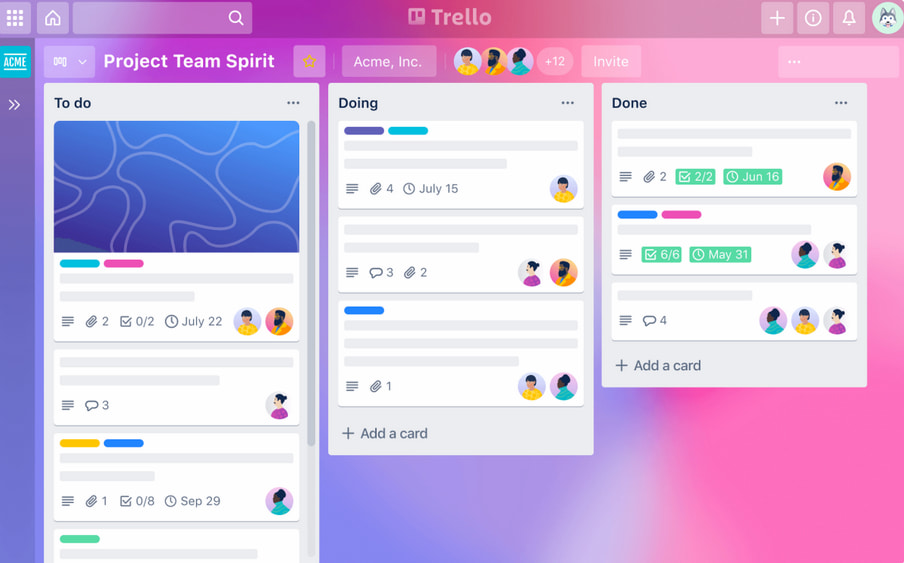
Todoist
- 📂 Projects → Sections → Tasks. Minimalist vibes.
- ➕ Sub-tasks, labels, priorities, recurring tasks.
- 📥 Inbox for instant task dumps; “Today” keeps you honest.
- 🗂️ Kanban-style Board view, but simpler than Trello.
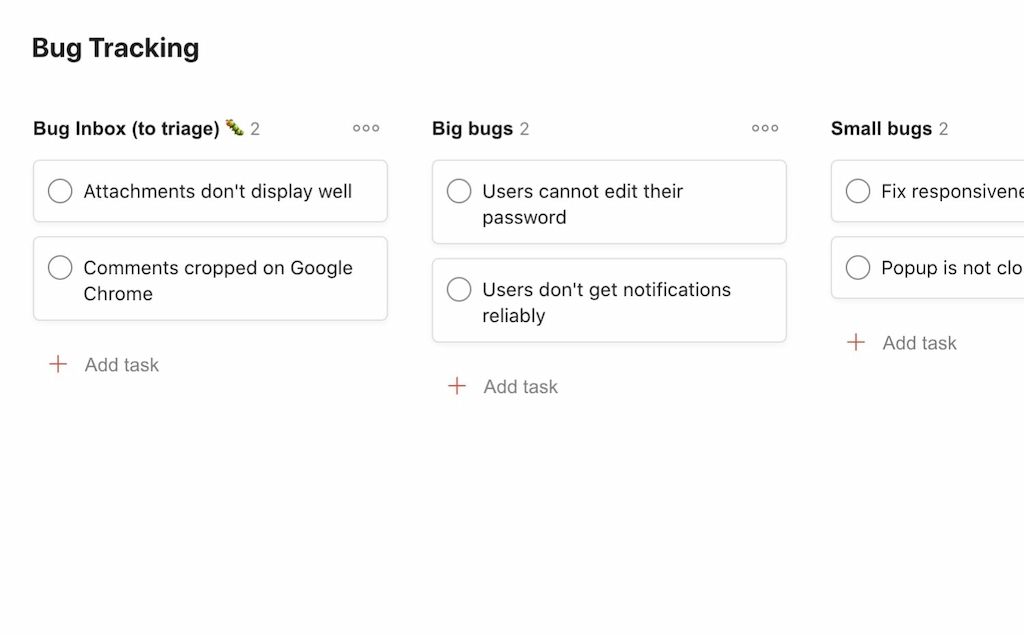
Verdict: Trello = visual thinkers’ playground. Todoist = quick-list ninja.
Collaboration & sharing
Trello
- 👥 Invite teammates, assign cards, chaos controlled.
- 💬 Comments, mentions, file uploads. Talk & share.
- ⚡ Power-Ups: voting, forms, Slack notifications.
- 🌐 Public boards (but don’t overshare!).
- 🔑 Guest access for clients or freelancers.
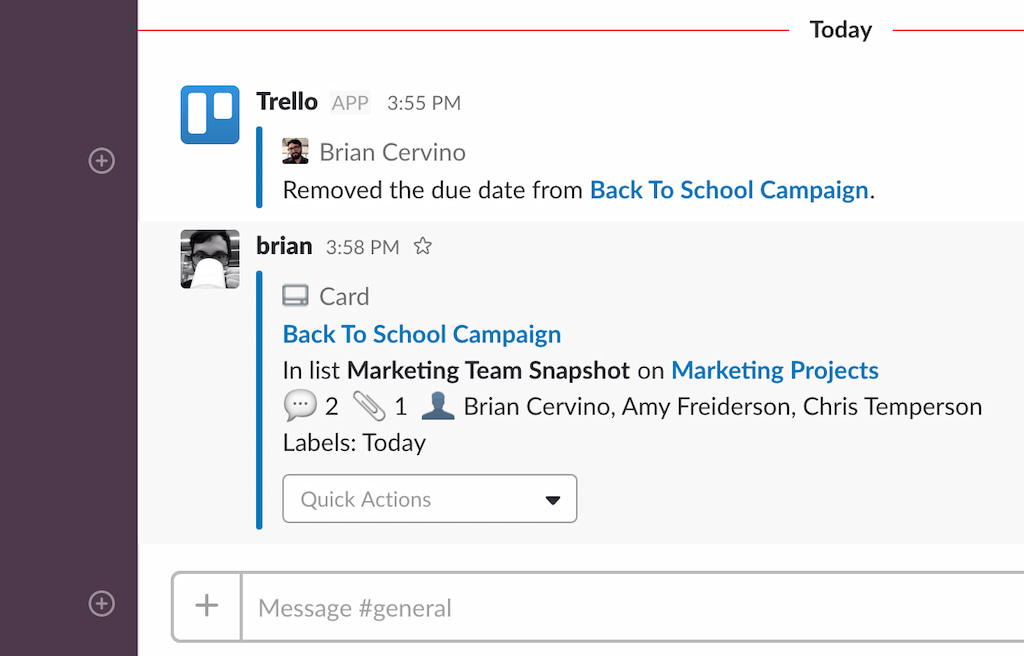
Todoist
- 👥 Share with up to 5 collaborators (free plan).
- ➕ Assign, comment, attach files.
- 📝 Project activity logs.
- 💼 Business plan: workspaces, admin controls, billing.
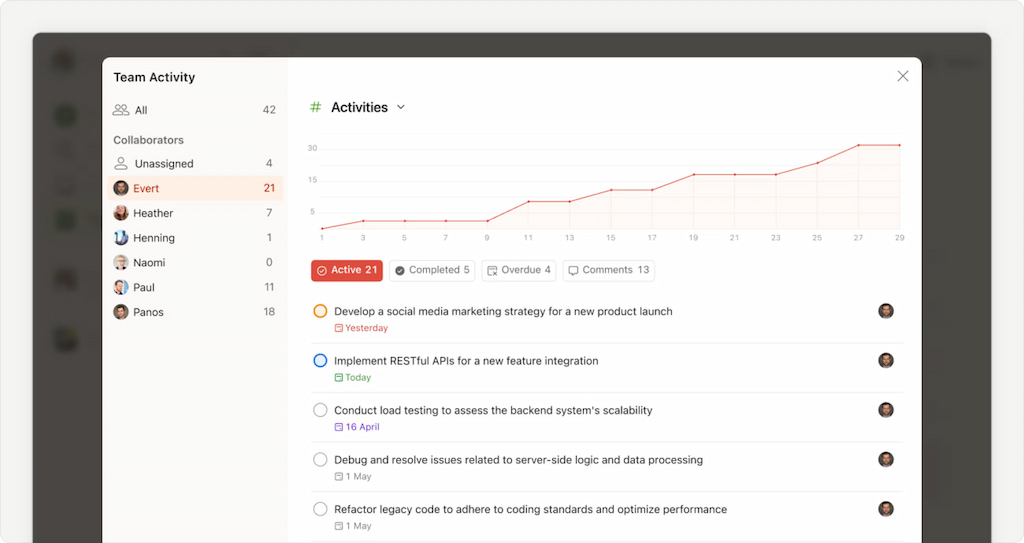
Verdict: Trello = teamwork dreams. Todoist = small-team charm.
Task features & scheduling
Trello
- 📅 Due dates + start dates (via Power-Up).
- ✅ Checklists with progress meters.
- 📎 Attach files, link cards, embed docs.
- 🤖 Automations move, assign, notify.
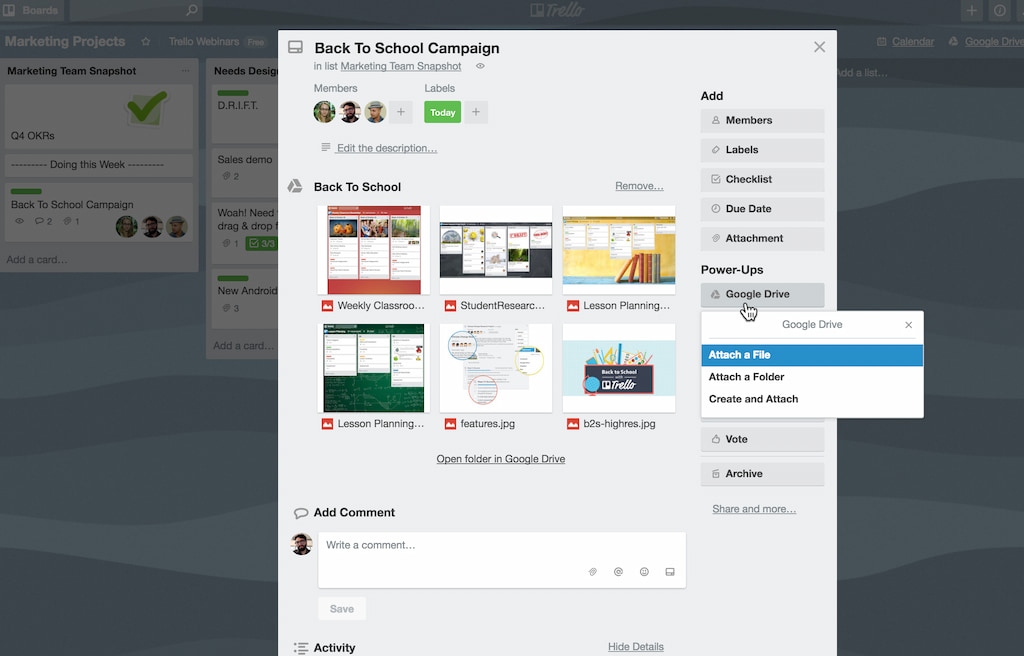
Todoist
- ⏰ Due dates, recurring tasks (“every Monday”).
- 📝 Natural language input (“Submit report next Friday 5pm”).
- 🔺 Priority flags P1–P4, sorted smartly.
- 📂 Sections keep tasks neat.
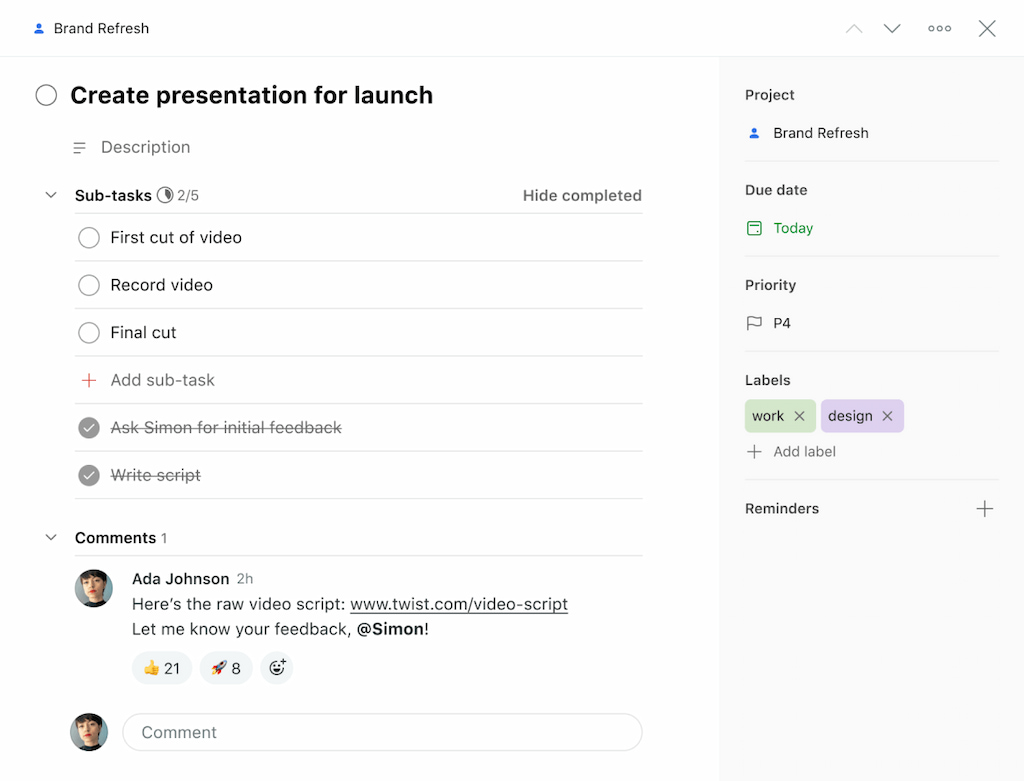
Verdict: Todoist = recurring-task hero. Trello = stage-by-stage champion.
Integrations & automation
Trello
- 🔌 Trello templates and Power-Ups: Everhour (Trello time tracking integration and Everhour’s Power-Up), Slack, Drive, Dropbox, Jira, Everhour, Butler.
- 🤖 Butler automates repetitive moves & assignments.
- 💻 API if you want to get fancy.
Todoist
- 🔌 Todoist integrations: Everhour (Todoist time tracking integration), Google Calendar, Gmail, Slack, Outlook, Zapier.
- ⚙️ Automation mostly via natural language or third-party apps (or Todoist templates).
Verdict: Trello = automation wizard. Todoist = integration helper.
Mobile & offline use
Trello
- 📱 iOS & Android, offline mode (limited, but better than nothing).
Todoist
- 📱 Apps everywhere. Offline fully works, syncs when back online.
Verdict: Todoist wins offline smoothness. Trello = decent but clunky.
Pricing (2025)
| Plan | Trello | Todoist | Notable Features |
|---|---|---|---|
| Free | Unlimited cards; 10 boards per workspace; unlimited members; 1 Power-Up/board; 10MB attachments | 5 projects; 5 collaborators per project; labels; filters; productivity reports; 5MB files | Good for personal projects |
| Standard / Pro | $5/user/month; unlimited boards; custom fields; advanced checklists; unlimited Power-Ups | $4/month; 300 projects; 25 collaborators/project; unlimited reminders; themes; filters; 100MB files | Good for small teams |
| Premium / Business | $10/user/month; dashboards; board collections; observers; more security; 250MB files | $6/user/month; team workspace; admin & member roles; priority support | Larger teams |
| Enterprise | Custom pricing; organization-wide permissions; SSO; advanced admin controls | Custom pricing | Enterprises requiring compliance |
Verdict: Trello can be cost-effective for teams if they need visual boards and automation. Todoist’s Pro plan is affordable for individual power users. The gap grows as team size increases.
Use Cases for Personal Use
Trello
- 📌 Planning trips: Create lists like “Plan,” “Book,” “Pack,” “Travel.” Cards represent tasks such as “Book flights.”
- 🏗️ Project building: Use lists as stages of personal projects (e.g., “Ideas,” “Research,” “Development”).
- 🔄 Visual habit tracking: Move habit cards across lists (e.g., “Weekly Workouts”).
![the 30 best trello templates in 2023 [paid & free]](https://blog-cdn.everhour.com/blog/wp-content/uploads/2023/04/Screenshot-2023-04-19-at-12-05-41-Better-Work-Habits-Challenge-Trello.jpg)
✅ Pros: Visual and satisfying card movement; easy to drag tasks; free to use.
❌ Cons: Overkill for simple to-do lists; no quick “Inbox.”
Todoist
- 🗒️ Daily task lists: Use labels and priority to organize errands, appointments, and reminders.
- 🎯 Goal tracking: Recurring tasks like “Read 20 mins” or “Exercise.”
- 🏆 Habit formation: Karma scores track productivity and encourage consistency.
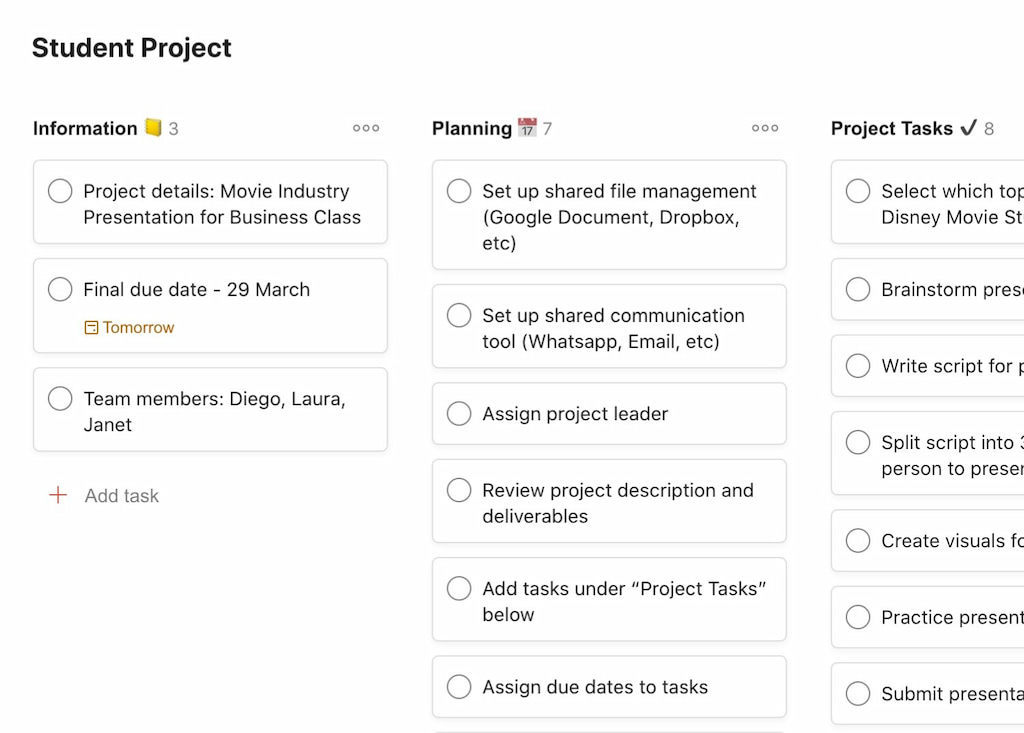
✅ Pros: Quick task entry; recurring tasks easy; gamification through Karma points.
❌ Cons: Less visual; no built-in habit trackers beyond recurring tasks.
Use Cases for Work & Teams
Trello
- ⚡ Agile workflows: Columns for stages (Backlog, To Do, In Progress, Testing, Done). Track tasks across sprints.
- 📣 Marketing & content: Columns like “Brainstorm,” “Draft,” “Review,” “Publish,” “Analyze.” Attach images and docs.
- 💼 Sales pipeline: Columns for leads, prospects, negotiations, closed deals.
Todoist
- 📝 Team to-do lists: Assign tasks, set deadlines, comment, and attach files.
- 👤 Personal task management: Each member organizes tasks individually; lacks full project oversight.
- 🗂️ Small projects: Use sections as phases (Prep, Ongoing, Complete).
Verdict: Trello excels in team and project use; Todoist suits small teams or individuals, but lacks advanced project management.
Workflow Integration: Everhour
Time tracking is critical for many projects. Both Trello and Todoist lack robust native time tracking. Here’s how Everhour can help:
Everhour with Trello
- Timers on cards: After installing the Everhour browser extension, timer buttons appear on Trello cards, and you can take full advantage of Trello time tracking.
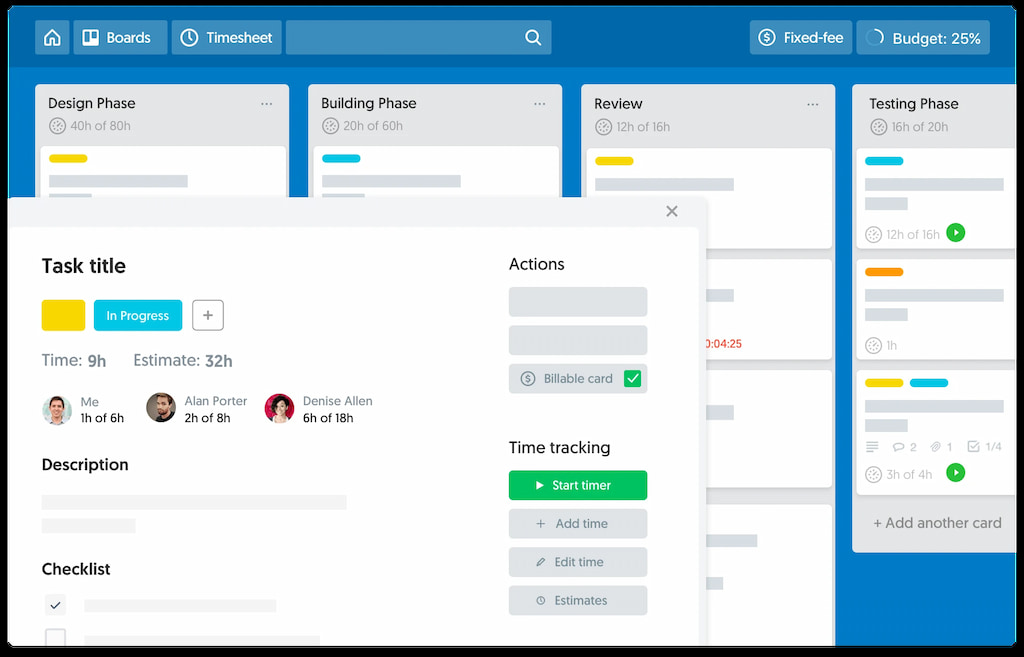
- Reports & budgets: Track time spent on each card or board. Analyze billable vs non-billable hours.
- Automatic updates: Everhour syncs with Trello to update task progress based on time tracked.
Everhour with Todoist
- Timers on tasks: Everhour adds a timer next to tasks in Todoist when using the extension for Todoist time tracking.

- Budget alerts: If tasks have estimated hours, Everhour alerts you when approaching limits.
- Invoicing: Generate invoices based on time logs; track client hours.
Why integrate
- Transparent planning: Understand how much time tasks consume and adjust estimates.
- Team utilization: See who is overloaded and reassign tasks.
- Time-based automation: Combine Everhour data with automations (e.g., if time logged > estimate, move card to another list).
Tips & Best Practices
- 🔍 Identify your workflow: Visual thinkers should choose Trello; list lovers, Todoist; hybrid? Use both for different needs.
- 🛠️ Create a system: In Trello, define column meanings clearly; in Todoist, use consistent labels and filters.
- 📌 Limit boards/projects: Keep Trello boards to core projects; in Todoist, manage many projects with sections and filters.
- 🤖 Use automation: Trello’s Butler can move cards, assign members, or change due dates automatically; in Todoist, use Zapier or IFTTT to automate tasks (e.g., create tasks from emails).
- ⏰ Set reminders & deadlines: In Todoist, use natural language and set recurring tasks; in Trello, assign due dates and use calendar Power-Up to view deadlines.
- 🔗 Integrate tools: Connect Slack, Google Drive, or Everhour to reduce context switching; leverage Trello Power-Ups or Todoist integrations depending on your tools.
- 📅 Regular reviews: Weekly, review Trello boards—archive completed cards, adjust deadlines; daily, check Todoist “Today” view and plan accordingly.
- 🤝 Collaborate effectively: Assign tasks clearly; use comments rather than emails. In Trello, tag teammates; in Todoist, assign tasks and set due dates.
FAQ: Trello vs Todoist
Which is easier to learn, Trello or Todoist?
Todoist has a shorter learning curve for quick to-do lists. Trello is intuitive but requires adjusting to Kanban boards.
Can I use both?
Yes. Many individuals use Todoist for personal tasks and Trello for projects requiring visual boards.
Do they integrate with calendars?
Both integrate with Google Calendar. Trello via Power-Up; Todoist via built-in integration.
Is either open source?
No. Neither Trello nor Todoist is open source.
Which supports offline mode?
Both offer offline mode in mobile apps. Todoist’s offline support is more robust.
Can I migrate tasks between them?
Not directly. Use CSV exports/imports or third-party tools like Zapier to sync tasks.
Which is better for collaborative projects?
Trello, with boards and powerful collaboration features. Todoist is simpler but less robust for team projects.
What about security?
Both encrypt data in transit and at rest. Trello offers extra admin controls in Enterprise plans. Todoist offers similar security.
Are there AI features?
Todoist has “smart schedule” suggestions for rescheduling tasks. Trello uses automation but not AI scheduling.
Pricing—Which is cheaper?
Todoist’s Pro plan ($4/month) is cheaper per user than Trello’s Standard ($5/month). For larger teams, the difference grows.
Trello vs Todoist: Final Thoughts
These tools take different approaches to productivity. Trello is a visual tool built for workflows, collaboration, and automations—great for sprints, calendars, and projects that move through stages. Todoist is a faster, list-based task manager designed for personal to-dos, recurring reminders, and lightweight team use.
If you prefer visual boards and teamwork, Trello is the stronger option. If you want a simple, focused way to manage daily tasks, Todoist is a better fit. Many people use both: Todoist for quick personal entries, Trello for shared projects.
Whichever you choose, connect a time tracker like Everhour to see where time goes and plan more effectively in 2025.
Check out our breakdown of Monday vs Todoist!
